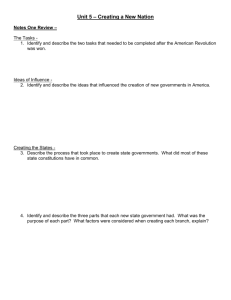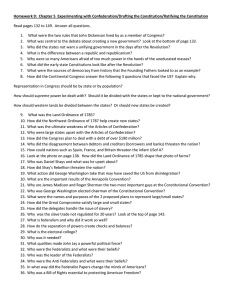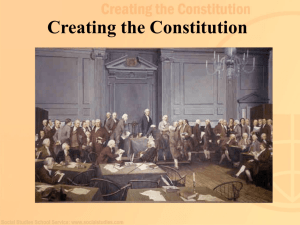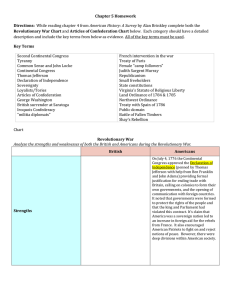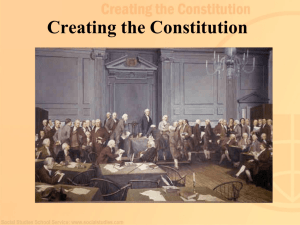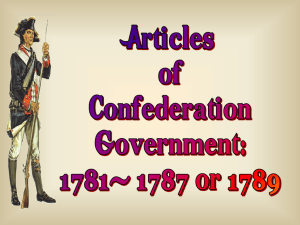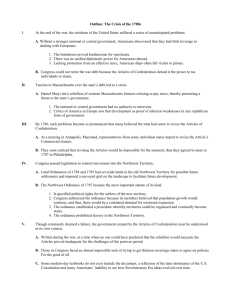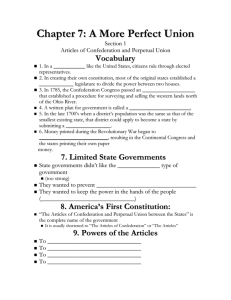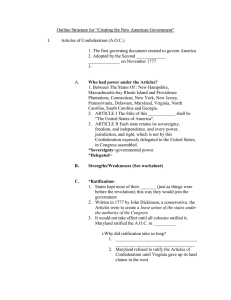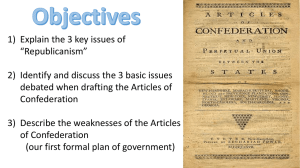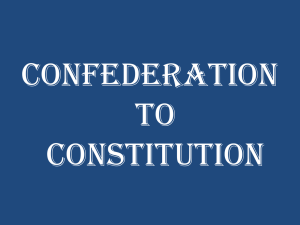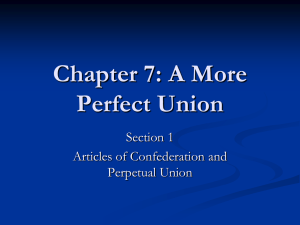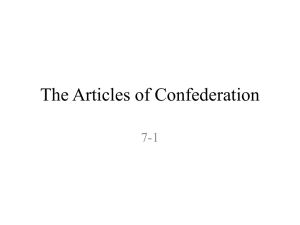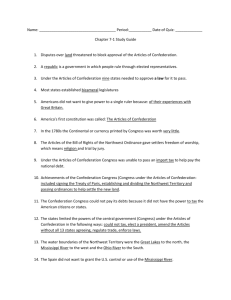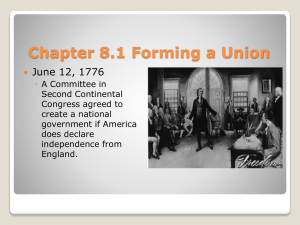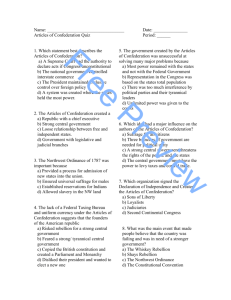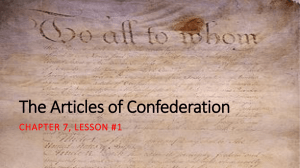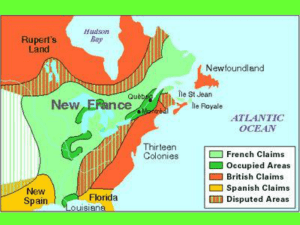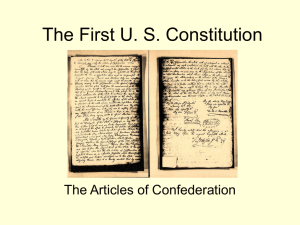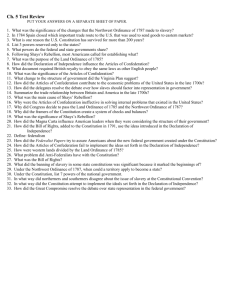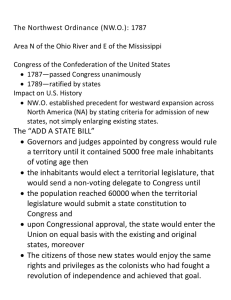7-1 The Confederation Era
advertisement
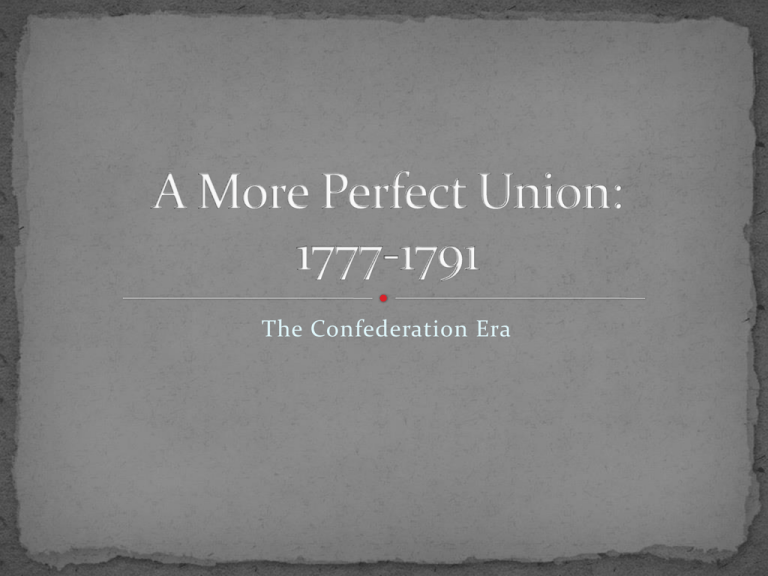
The Confederation Era Once independence declared… New 13 States begin creating own gov’t Didn’t want to destroy what already had as colonies Just want them more democratic Some est. system of “branches” to make sure no one too powerful Some include “Bill of Rights” From English Bill of Rights (1689) List of rights guaranteed to its citizens All were forms of democracies called… Republics- were citizens elect leaders to represent them and make decisions on their behalf While setting up state gov’ts realized needed a form of National Government “United we stand, divided we fall.” ~ Silas Deane, Rep. of CT 1776- Congress begins plan Agreed should be a republic, but that was about it Disagreed on… # of votes per state 1 each or based on population Will nat’l gov’t control lands in west or states Nov. 1777- Final plan called Articles of Confederation Powers of Federal Gov’t Afraid strong gov’t lead to tyrannical rule Run by a Congress 1 vote per state Wage war, make peace, sign treaties, issue money States’ Powers Most important ones Tax, enforce laws, leave states in control of western lands Sent out to be Ratified, or signed into law 8 of 13 sign right away but… Other 5 LITTLE GUYS refused to sign b/c they didn’t have western land claims With land claims… sell off land to pay debts Without land claims… no way to pay off war debts Takes 3 years but… Land claims given to federal gov’t 1782- last of small states ratify when Maryland signs US of A finally has system of gov’t!!! Most Important ?’s for new Federal Government… What do we do w/ all this land? Passed laws on how it would be divided Land Ordinance of 1785 Surveyors stake out 6 mile plots called townships in new “NW Territory” Later become states of Ohio, Indiana, Michigan, Illinois, Wisconsin, and Minnesota Each township broken into 36 quarter-mile squares people could buy Northwest Ordinance of 1787 Set conditions for settlement Slavery would be outlawed Rivers free to all Freedom of religion and trial by jury guaranteed Described how it would be governed As territory grew, gain rts. to self-govern 5,000 free men can elect an Assembly 60,000 free men could apply for statehood Important b/c set a pattern for orderly growth Except for handling of land issues… “Articles” had few successes By end of war gov’t faced serious problems but… no power to solve them!!! Serious Debt Congress had borrowed lg. amounts to finance war Most of it owed to soldiers No power to levy taxes Depended on states to send $$$ Very little sent Congress not alone People had no money either Now begin to revolt against NEW gov’t !!! Something must be done soon!!! I WANT MY MONEY, PUNK!!! Articles of Confederation Successes and Strengths of A of C •Ran the nation while at war •Negotiated Treaty of Paris to end Revolutionary War •Passed the Land Ordinance of 1785 •Passed the NW Ordinance of 1787 • • • • • Weaknesses of A of C Lacked power to enforce laws Lacked power to levy taxes Lacked power to regulate trade among the states No common currency Required ALL 13 states to approve changes in the Articles of Confederation A of C for Dummies

